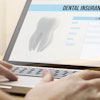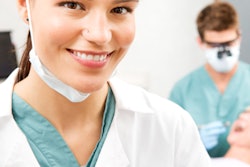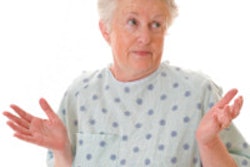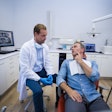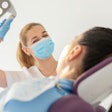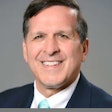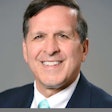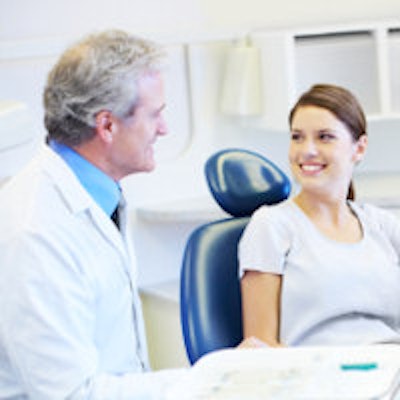
Using the right communication techniques in everyday practice can increase patient compliance and have clinical benefits, but how many dentists are communicating effectively with patients?
A new study in the Journal of the American Dental Association has found that dentists don't make enough use of communication techniques in everyday practice (JADA, December 2013, Vol. 144:12, pp. 1386-1396). Communication skills should be given higher priority in dental school and postgraduate continuing education (CE) offerings, the study authors recommended. This is especially important as research has shown that dental facilities are not always perceived as user-friendly.
Study author Catherine Maybury, MPH, a faculty research assistant at the Herschel S. Horowitz Center for Health Literacy at the University of Maryland School of Public Health, said that this study was part of a comprehensive statewide oral health literacy assessment being conducted. The authors surveyed dentists, pediatric dentists, dental hygienists, family physicians, and nurse practitioners about their knowledge, opinions, and practices related to caries prevention and their use of communication skills.
"We are gathering baseline data to use in designing and implementing interventions to improve oral health," Maybury said.
The American Medical Association and health literacy experts recommend using 18 techniques, including seven basic techniques, to improve patient-provider communication and positively impact health outcomes. These 18 techniques are grouped into five domains, including interpersonal communication, teach-back method, patient-friendly materials and aids, assistance, and patient-friendly practice. The items in the first two domains constitute the seven basic techniques. Maybury and colleagues addressed the same 18 communication techniques in their study.
In 2011, a national survey on dentist-patient communication showed that routine use of all the communication techniques was low among dentists, including some techniques thought to be most effective with patients with low literacy skills (JADA, May 2011, Vol. 142:5, pp. 518-530).
“We were disappointed that Maryland dentists do not use more ... communication techniques.”
"Our findings were similar to the national survey," Maybury said.
Maybury and colleagues mailed a 30-item questionnaire, which they adapted from the questionnaire used by the 2011 study, to 1,393 general practice dentists and all 169 members of the Maryland chapter of the American Academy of Pediatric Dentistry in June and July 2010.
They asked respondents how often they used each of the 18 communication techniques in a typical workweek with five response options of "always," "most of the time," "occasionally," "rarely," and "never." They also asked respondents whether they thought a particular technique was effective or not.
The overall response rate was 38.4% (600 surveys returned), but the effective response rate was 28.5% as 155 of these 600 surveys were not usable.
The most frequently used techniques were using simple language, speaking slowly, using models or x-rays to explain, and limiting the number of concepts presented at a time to two or three.
Pediatric dentists routinely used 13 of the 18 techniques more frequently than the general dentists. General dentists routinely used a mean of 7.9 of the 18 communication techniques and 3.6 of the seven basic techniques, whereas responses from pediatric dentists showed that they used a mean of 8.4 and 3.8 of those techniques, respectively.
"We were disappointed that Maryland dentists do not use more of these communication techniques on a routine basis," Maybury said.
Mirroring the findings of the national survey, the authors found that communication techniques routinely used by dentists varied greatly.
For example, while 93.4% of general dentists reported using simple language "always" or "most of the time," only 19% reported that they asked patients to repeat back information "always" or "most of the time."
Both general dentists and pediatric dentists used a low percentage of teach-back methods. Only about 20% of respondents asked patients to repeat back information, and 35% of general dentists and 50% of pediatric dentists asked patients to tell them what they would do at home to follow instructions.
"This is disappointing because it is considered the most important health communication technique," Maybury said.
Apart from the techniques themselves, the content of what is communicated is critical, the authors noted. Almost all (93%) respondents said they provide caries-prevention education for children and their parents. However, only 45% said they provide education about community water fluoridation and the use of fluoridated dentifrice, and one-half said they provided education about pit-and-fissure sealants.
Both general dentists and pediatric dentists who had taken a communication skills course outside of dental school were more likely to routinely use the 18 communication techniques than were those who had not.
"If dentists reported they had not taken a CE course on communication skills, we encouraged them to do so. Our findings indicate that those who had taken a communication skills course were more likely to use these communication techniques," Maybury said. "We know that most do not get much [communication technique training] in dental school."
Overall, the number of communication techniques that dentists used was low, the authors noted. They recommended that dentists and their team members consider taking communication skills courses and conducting an overall evaluation of their practices for user friendliness.
Use of these techniques has been shown to improve patients' understanding of their health, their ability to follow through with recommendations for self-care, and their ability to manage a chronic condition, Maybury explained.
"If a dentist communicates in ways that help patients understand their oral health status and the dentist's guidance for self-care, patients may be more likely to follow self-care recommendations, which can lead to improved health outcomes," she concluded.


